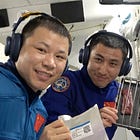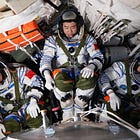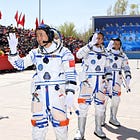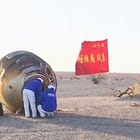'Emergency Response' Shenzhou-22 Successfully Launched to Tiangong [Long March 2F/G Y22]
China's Shenzhou-21 taikonauts have a new spacecraft to return to Earth with inbound, as it delivers new cargo to the space station.
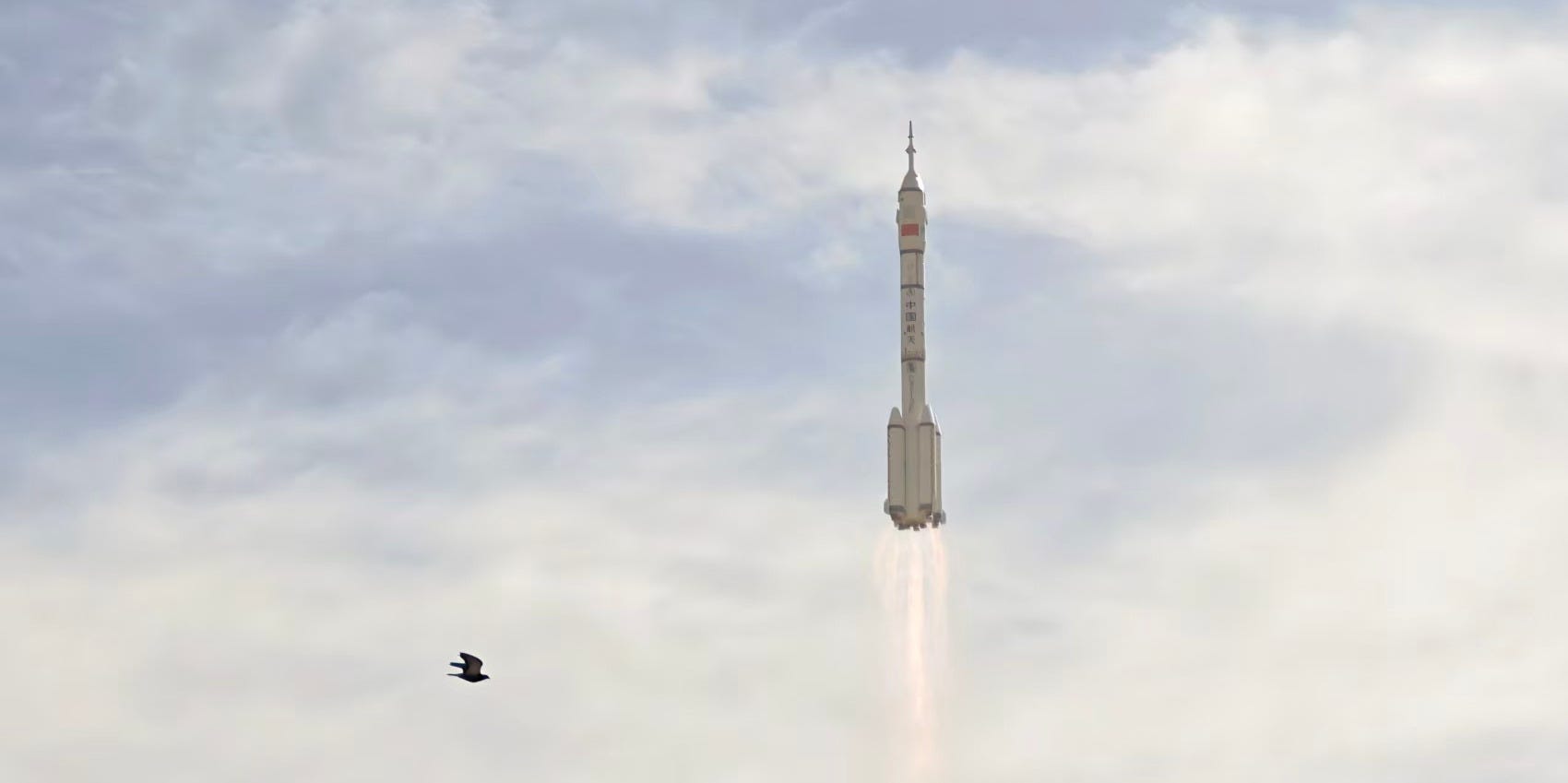
Blasting off at 12:11 pm China Standard Time (04:11 am Universal Coordinated Time) on November 25th from Launch Area 4 at the Jiuquan Satellite Launch Center, a Long March 2F/G carried the replacement uncrewed Shenzhou-22 spacecraft into a rendezvous path toward the Tiangong Space Station.
Following its ride into low Earth orbit atop of the Long March 2F/G, the autonomously flying Shenzhou-22 deployed its two solar panels to begin generating electrical power while heading toward Tiangong. In place of a crew in the spacecraft’s seats are fresh commodities (fresh food, water, clothing) and new experiments, weighing about 600 kilograms.
At the time of publication, Shenzhou-22 is expected to dock at the Tianhe module’s forward-facing port in four and a half hours after liftoff. Following comprehensive post-docking checks, hatches to the spacecraft’s orbital and reentry modules will be opened.
Within the China Manned Space Agency, Shenzhou-22’s launch has been assigned as Tiangong Emergency Response-1 (天宫应急-1) alongside its standard designation.

Once docked to Tianhe, the Shenzhou-22 spacecraft will be assigned to the Shenzhou-21 taikonauts currently onboard the Tiangong Space Station. Those taikoanuts are Commander Zhang Lu (张陆)1, Flight Engineer Wu Fei (武飞)2, and Payload Expert Zhang Hongzhang (张洪章)3, who have had Shenzhou-20 as their emergency Earth return spacecraft since mid-November. This will also resume the ability to return scientific cargo when the crew does in April 2026.
The decision to launch a replacement Shenzhou spacecraft was made by the China Manned Space Agency, between public statements, after the Shenzhou-20 spacecraft was struck by a small piece of debris, resulting in a crack in one of the window’s outermost layers. That was problematic as only the outermost layer, of which there are three others, is designed to withstand reentry heating, meaning that a failure of that layer could compromise the remaining three layers, leading to depressurization. During launch and return to Earth, all three taikonauts wear pressurized suits to ensure their safety even in the event of a loss of spacecraft pressure, keeping them safe but degrading or ruining most experiments traveling with them.
With the cracked window, the Shenzhou-20 taikonauts of Commander Chen Dong (陈冬)4, Operator Chen Zhongrui (陈中瑞)5, and Science Operator Wang Jie (王杰)6 returned to Earth on November 14th with the newer Shenzhou-21 spacecraft, bringing completed experiments back with them.
The whole process from finding an issue with the Shenzhou-20 spacecraft to launching Shenzhou-22 took just twenty days, with the testing and launch procedures beginning sixteen days ago.
According to the China Manned Space Agency, the Shenzhou-22/Tiangong Emergency Response-1 mission patch represents the following:
“Featuring the Great Wall as its foundation, it embodies a solemn commitment to the safety of astronauts. The bow-and-arrow motif, combined with the Long March 2F launch vehicle and Shenzhou spacecraft, forms the visual core, conveying a sense of poised readiness and unwavering determination to fulfill the mission. Twenty-two sharp arrows encircle the design, precisely reflecting the mission number. The color scheme employs blue to represent the foundation of aerospace technology, red to symbolize mission responsibility, and orange to highlight the swiftness of emergency rescue operations.”
If there are any problems with this translation please reach out and correct me.
The Shenzhou-22 mission is the 22nd flight of the Shenzhou vehicle, and the 35th for the human exploration program, including space station module launches and cargo spacecraft. It is also the 6th uncrewed launch of a Shenzhou spacecraft, the first since Shenzhou-8 in November 2011.
Today’s launch was the 27th for the Long March 2F series, and the 610th launch of the Long March launch vehicle series. This was also the 76th launch from China in 2025.
Launch live stream replay via CGTN and CCTV Video News Agency on YouTube.
Check out recent Shenzhou updates
What is the Long March 2F?
This section is for those less familiar with China’s Long March series of launch vehicles.
The Long March 2F is the only human-rated launch vehicle currently active in China, with it developed by the China Academy of Launch Vehicle Technology. Two versions of the launch vehicle are currently active, the 2F/G and 2F/T. The Long March 2F/G launches the Shenzhou spacecraft, while the 2F/T launches China’s reusable spaceplane and did launch the first two Tiangong space stations. All versions of the Long March 2F have had the boosters, first, and second-stage burn Dinitrogen Tetroxide and Unsymmetrical Dimethylhydrazine.
The payload capacity of the launch vehicle is currently as follows:
8,400 kilograms to low Earth orbit
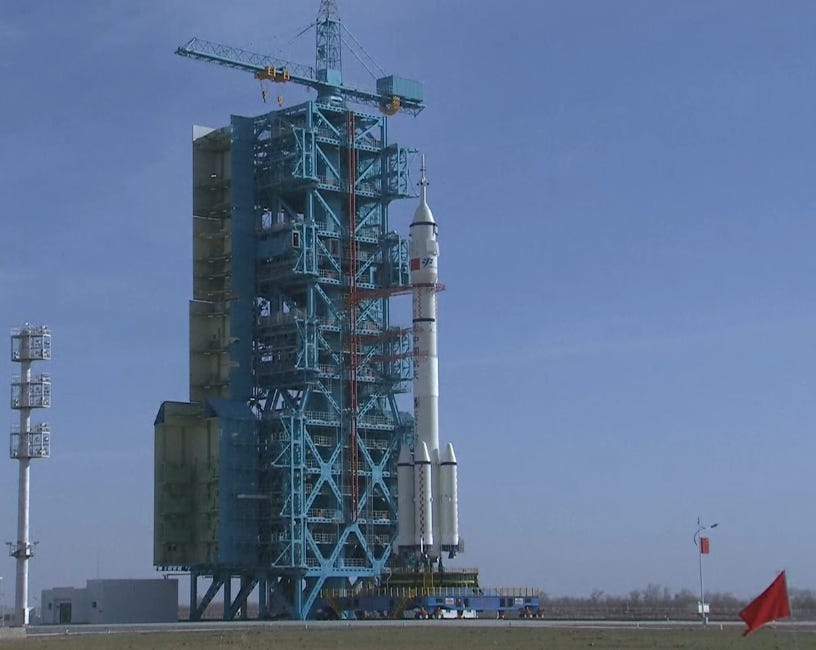
Powering the first-stage are four YF-20B engines generating a combined 332 tons of thrust, burning Dinitrogen Tetroxide and Unsymmetrical Dimethylhydrazine. Augmenting the thrust of the first-stage are four boosters, each powered by one YF-20B, each generating 83 tons of thrust each for a combined booster thrust of 332, while also burning Dinitrogen Tetroxide and Unsymmetrical Dimethylhydrazine. The combined thrust of the first-stage and four boosters is 664 tons of thrust. The second-stage of the vehicle is powered by one YF-24B generating 85 tons of thrust, once again burning Dinitrogen Tetroxide and Unsymmetrical Dimethylhydrazine.
On the launchpad, the Long March 2F is 62 meters tall, with the Shenzhou spacecraft’s launch escape system, and weighs 464,000 kilograms when fully fuelled. The first and second stages have a diameter of 3.35 meters, with the four boosters having a diameter of 2.3 meters, and the Shenzhou spacecraft’s protective fairing has a maximum diameter of 3.6 meters.
So far, the Long March 2F has only flown from the Jiuquan Satellite Launch Center, in the west of the Inner Mongolia Autonomous Region and the north of Gansu province.
Zhang Lu is the Commander and Pilot of the mission for his second spaceflight, having flown for the Shenzhou-15 mission between November 2022 and June 2023. He is from Hanshou County (汉寿县), Hunan (湖南) province, and was selected as part of China’s second taikonaut group in 2010, also being considered a ‘post-70s’ taikonaut having been born in November 1976.
Before becoming a taikonaut, Zhang served in the People’s Liberation Army Air Force and achieved the rank of Senior Colonel. He also joined the Communist Party of China in April 1999. After the Shenzhou-15 mission, Zhang was awarded the Spaceflight Merit Medal (Third Class) along with the honorary title of hero taikonaut.
Wu Fei is the Flight Engineer for this mission, which will be his first trip into space. He is from Baotou (包头市 / ᠪᠤᠭᠤᠲᠤᠬᠣᠲᠠ), in the Inner Mongolia Autonomous Region (内蒙古自治区 / ᠥᠪᠥᠷ ᠮᠣᠩᠭᠣᠯ ᠤᠨ ᠤᠨᠥᠪᠡᠷᠲᠡᠭᠨ ᠵᠠᠰᠠᠬᠤ ᠣᠷᠣᠨ), and was selected as part of the third taikonaut group in October 2020, while being considered a ‘post-90s’ taikonaut having been born in 1993.
Before his selection as a taikonaut, Wu was an engineer at the China Aerospace Science and Technology Corporation. He also joined the Communist Party of China in 2015.
Zhang Hongzhang is the Payload Expert for this mission, with it being his first trip to space. He is from Binzhou (滨州市), Shandong (山东) province, and was also selected as part of the third taikonaut group in October 2020, while being considered a ‘post-80s’ taikonaut having been born in 1986.
Prior to being selected as a taikonaut, Zhang was a researcher at the Dalian Institute of Chemical Physics, Chinese Academy of Sciences (中国科学院大连化学物理研究所), where he explored new materials and technology for batteries. He also joined the Communist Party of China in 2004.
Chen Dong of Luoyang (洛阳市), Henan (河南) province, born December 1978, is the Commander for the Shenzhou-20 mission. Chen was selected as a taikonaut in 2010 as part of the second batch.
Prior to his space career, Chen enlisted in the People’s Liberation Army Air Force in 1997 and joined the Communist Party of China in 1999. Following the Shenzhou-11 mission, he was awarded the Spaceflight Merit Medal (Third Class) along with the honorary title of hero taikonaut in 2016.
Chen Zhongrui of Puyang (濮阳市), Henan (河南) province, born October 1984, is the Operator for the Shenzhou-20 mission. Chen was selected as a taikonaut in 2020 as part of the third batch.
Prior to his space career, Chen enlisted in the People’s Liberation Army Air Force in 2003 and joined the Communist Party of China in 2005.
Wang Jie of Bayannur (巴彦淖尔市 / ᠪᠠᠶᠠᠨᠨᠠᠭᠤᠷ ᠬᠣᠲᠠ), in the Inner Mongolia Autonomous Region (内蒙古自治区 / ᠥᠪᠥᠷ ᠮᠣᠩᠭᠣᠯ ᠤᠨ ᠤᠨᠥᠪᠡᠷᠲᠡᠭᠨ ᠵᠠᠰᠠᠬᠤ ᠣᠷᠣᠨ), born September 1989, is the Science Operator for the Shenzhou-20 mission. Wang was selected as a taikonaut in 2020 as part of the third batch.
Prior to his space career, Wang was an engineer from the China Aerospace Science and Technology Corporation and joined the Communist Party of China in 2009.



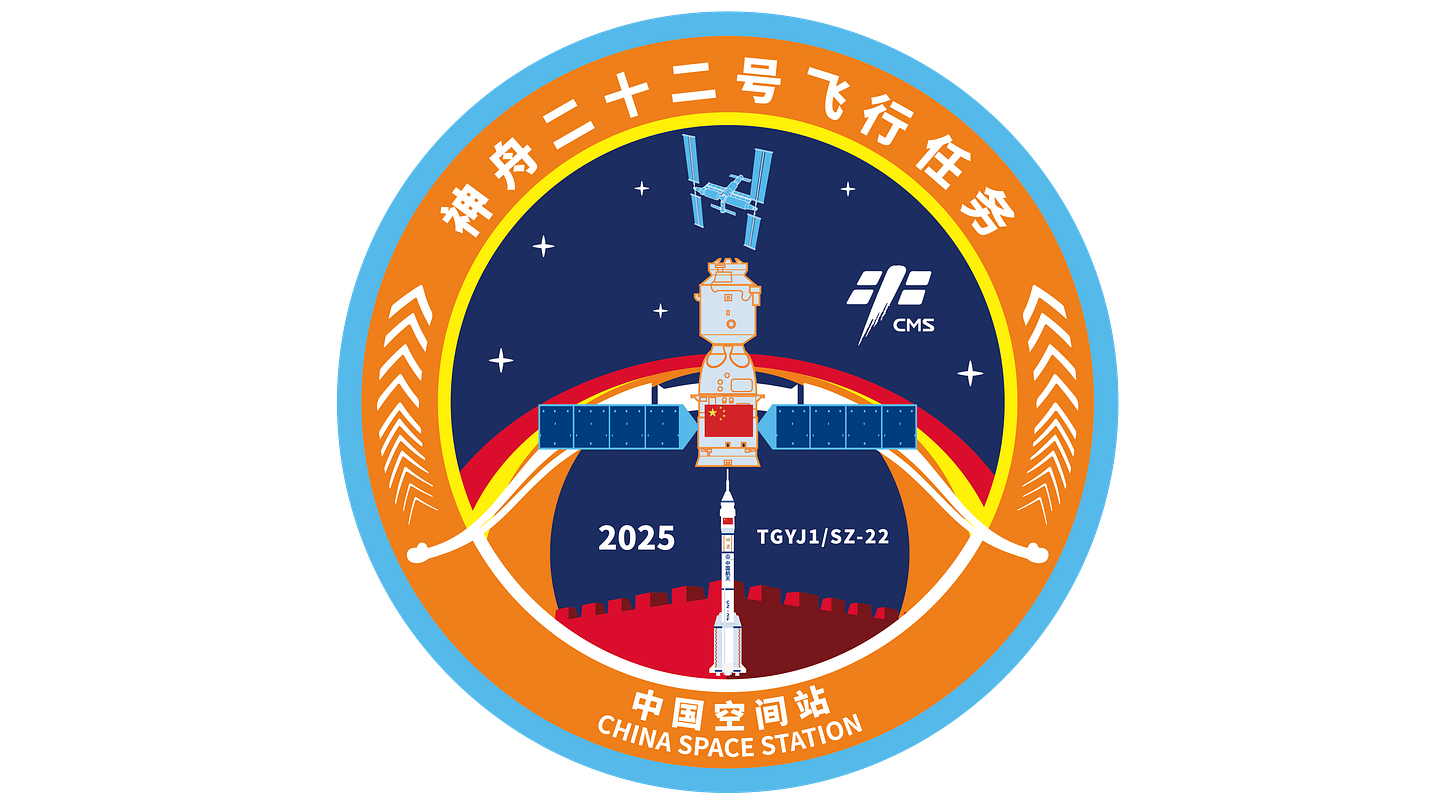
![Shenzhou-21 Successfully Strides Into Orbit! [Long March 2F/G Y21]](https://substackcdn.com/image/fetch/$s_!TNk4!,w_140,h_140,c_fill,f_auto,q_auto:good,fl_progressive:steep,g_auto/https%3A%2F%2Fsubstack-post-media.s3.amazonaws.com%2Fpublic%2Fimages%2F777bb074-1306-4931-8f60-75d5a6c68d65_5568x2811.jpeg)
